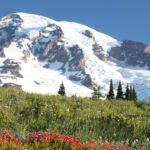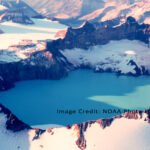Explore Death Valley National Park, California. Discover its rich history, unique biodiversity, top attractions, activities, accommodations, weather conditions, and conservation efforts. Plan your visit with our comprehensive guide.
Table of Contents
Introduction to Death Valley National Park
Death Valley National Park, located in Eastern California, is a land of extremes. Known for its scorching temperatures, vast salt flats, and unique geological formations, it is a destination that captivates adventurers and nature enthusiasts alike. This park is one of the hottest places on Earth and home to a diverse range of flora and fauna adapted to its harsh environment. In this comprehensive guide, we’ll explore everything you need to know about Death Valley National Park, from its fascinating history to the best activities and accommodations available.
History and Background
Death Valley has a rich history dating back thousands of years. The Timbisha Shoshone people were the first known inhabitants of the valley, and their descendants still live in the area today. European Americans first explored the region during the California Gold Rush in the mid-19th century. The name “Death Valley” originated from a group of pioneers who, while seeking a shortcut to the gold fields, were stranded in the valley and barely survived. Despite its ominous name, the valley is now a symbol of resilience and survival. Established as a national monument in 1933 and designated a national park in 1994, Death Valley continues to attract visitors with its unique landscape and historical significance.
Biodiversity in Death Valley
Despite its harsh conditions, Death Valley National Park boasts a surprising level of biodiversity. The park is home to over 1,000 plant species, including the iconic creosote bush, Joshua tree, and several species of cacti. Wildlife is equally diverse, with animals such as the desert bighorn sheep, kit foxes, and various lizards making their home in the park. Bird watchers can spot over 300 species of birds, including the rare and endangered desert tortoise. The unique adaptations of these plants and animals to survive in such an extreme environment make Death Valley a fascinating study in resilience and evolution.
Famous Attractions
Death Valley National Park is filled with stunning and unique attractions. One of the most famous is Badwater Basin, the lowest point in North America at 282 feet below sea level. The basin is covered in vast salt flats that create a surreal and otherworldly landscape. Another must-see is Zabriskie Point, known for its breathtaking views of the badlands and colorful sedimentary formations. The Mesquite Flat Sand Dunes are perfect for a picturesque hike, while Dante’s View offers panoramic vistas of the entire valley. Artists Drive, a scenic loop through multi-colored hills, and the historic Scotty’s Castle are also popular stops for visitors.
Activities in Death Valley
There is no shortage of activities to enjoy in Death Valley National Park. Hiking is a popular choice, with trails ranging from easy walks to challenging treks. Some of the best hikes include Golden Canyon, Mosaic Canyon, and Telescope Peak. For those interested in stargazing, Death Valley is a designated International Dark Sky Park, offering some of the clearest night skies in the United States. Photography enthusiasts will find endless opportunities to capture the park’s unique landscapes. Off-roading and cycling are also popular activities, with many backcountry roads and trails to explore. Additionally, the park hosts several ranger-led programs and educational tours throughout the year.
Accommodations in Death Valley
Accommodations in Death Valley National Park cater to a range of preferences and budgets. The historic Oasis at Death Valley (formerly Furnace Creek Resort) offers luxury lodging, including the upscale Inn at Death Valley and the more budget-friendly Ranch at Death Valley. For a more rustic experience, several campgrounds are available, such as Furnace Creek Campground, Mesquite Spring Campground, and Emigrant Campground. Backcountry camping is also an option for the more adventurous, providing a chance to experience the park’s solitude and natural beauty up close. Nearby towns like Beatty and Pahrump offer additional lodging options just outside the park.
Weather Conditions
Death Valley is renowned for its extreme weather conditions. Summers are intensely hot, with temperatures often exceeding 120°F (49°C), making it one of the hottest places on Earth. Winter temperatures are milder, ranging from 40°F (4°C) at night to 70°F (21°C) during the day, making it the ideal season for visiting. Spring and fall also offer comfortable temperatures for outdoor activities. Rainfall is scarce, averaging less than 2 inches per year, and most precipitation occurs during winter storms. Visitors should always be prepared for extreme heat and carry plenty of water, sun protection, and appropriate clothing.
Tips for Visiting Death Valley
When planning a trip to Death Valley National Park, preparation is key. Always carry sufficient water—at least one gallon per person per day. Wear sun-protective clothing, hats, and sunscreen to guard against the harsh sun. Vehicles should be in good condition and equipped with extra water and coolant, especially during the summer months. Cell phone reception is limited, so carrying a detailed map and GPS is advisable. Check weather forecasts and park alerts before heading out, as flash floods can occur. Lastly, respect the fragile desert environment by staying on marked trails and disposing of waste properly.
Visitor Information
Death Valley National Park is open year-round, but the visitor experience varies greatly with the seasons. The Furnace Creek Visitor Center is the main hub for visitor information, offering exhibits, a bookstore, and ranger assistance. Entrance fees are required, with options for day passes and annual passes. The park is accessible via several routes, with the main entrances being from the east via Nevada Highway 374 and from the west via California Highway 190. Public transportation is limited, so driving is the most practical way to explore the park.
Conservation Efforts
Conservation is a critical aspect of Death Valley National Park’s management. The park is home to several endangered species and unique ecosystems that require protection. Efforts include habitat restoration, invasive species control, and monitoring of wildlife populations. The park also promotes sustainable tourism practices to minimize human impact on the environment. Educational programs and volunteer opportunities are available for those interested in contributing to conservation efforts. Collaborations with local communities and organizations help ensure the preservation of Death Valley’s natural and cultural resources for future generations.
For more detailed information, Click here to visit the National Park Service website.
Death Valley National Park is a land of contrasts and extremes, offering visitors an unparalleled experience of nature’s raw beauty and resilience. From its fascinating history and rich biodiversity to its iconic attractions and myriad activities, there is something for everyone to enjoy. Whether you’re hiking through colorful canyons, marveling at expansive salt flats, or stargazing under the clear desert sky, Death Valley leaves a lasting impression. By understanding the park’s unique environment and preparing adequately, you can have a safe and memorable visit. Embrace the adventure and discover all that Death Valley National Park has to offer.








1 thought on “Discover Death Valley National Park: A Complete Guide to California’s Unique Desert Landscape”